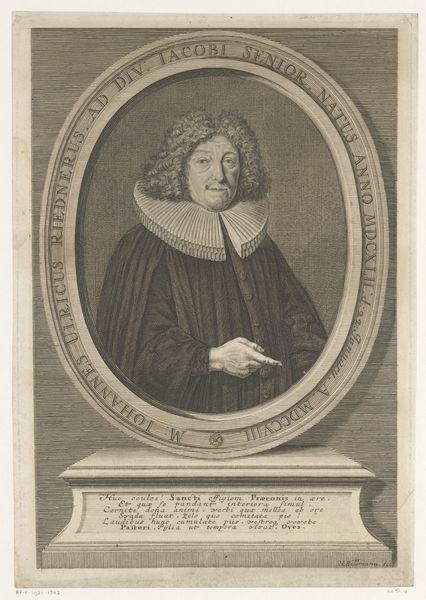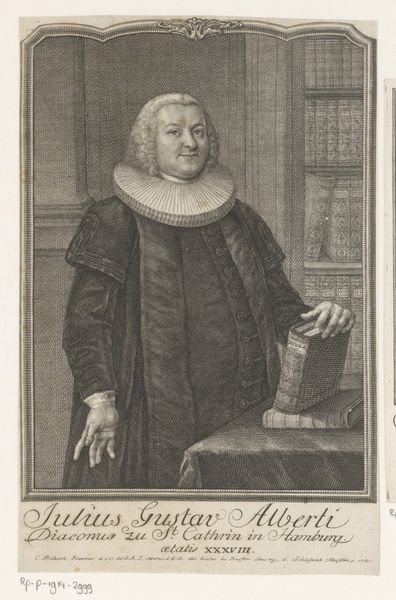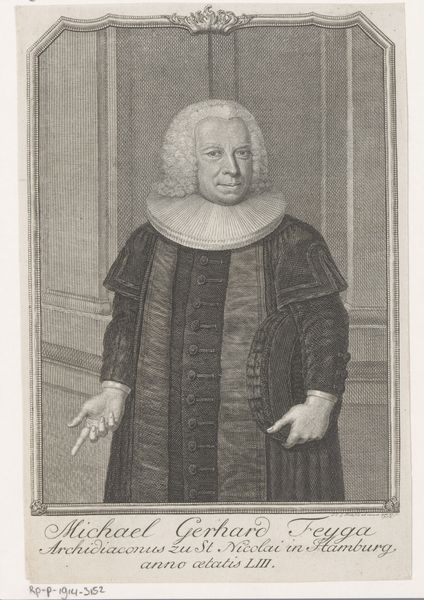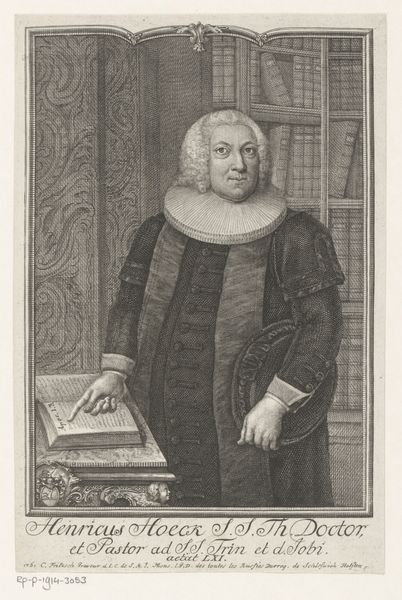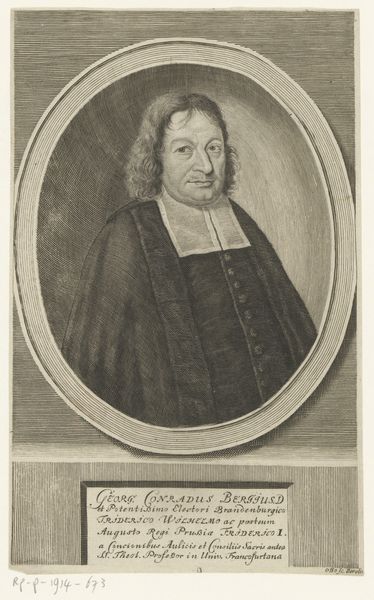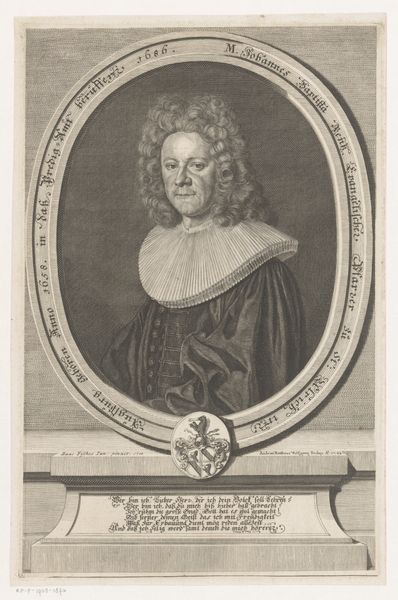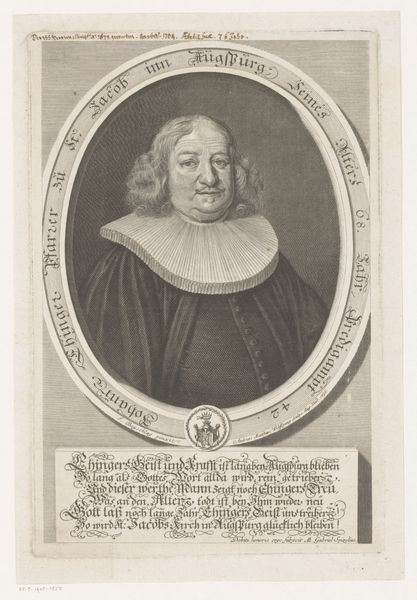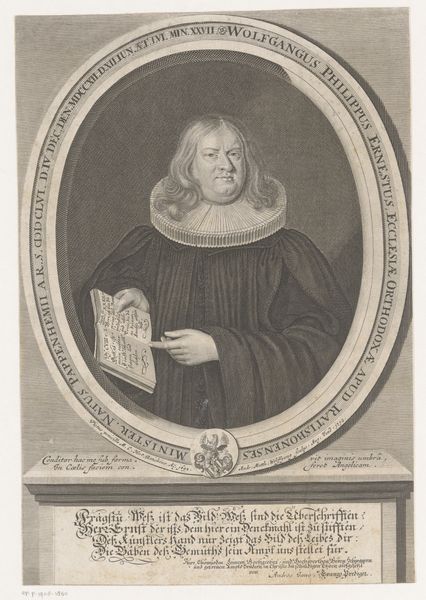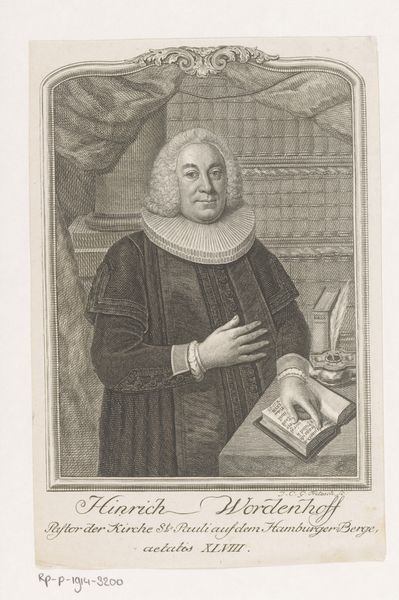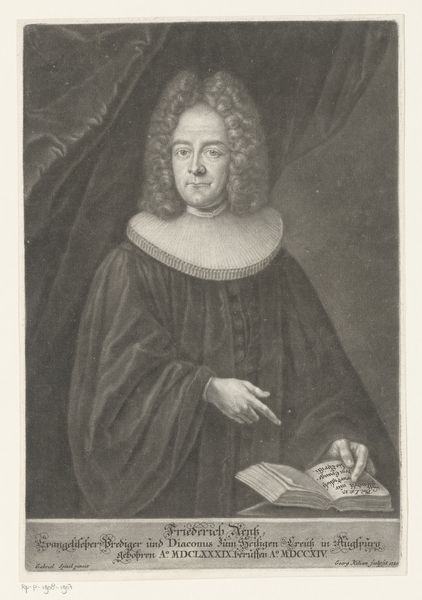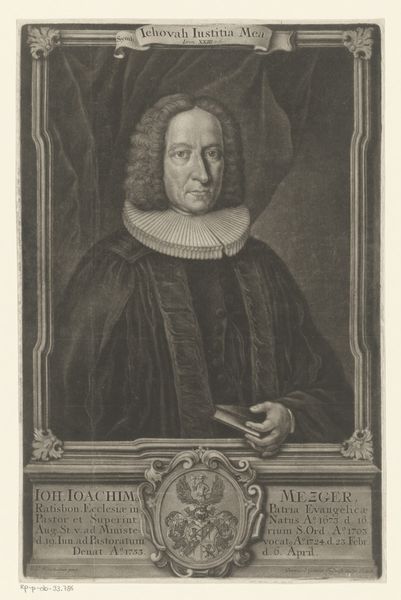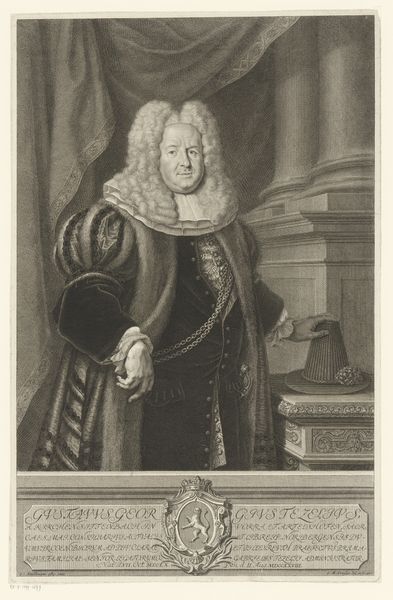
engraving
#
portrait
#
baroque
#
old engraving style
#
portrait reference
#
pencil drawing
#
portrait drawing
#
northern-renaissance
#
engraving
Dimensions: height 186 mm, width 142 mm
Copyright: Rijks Museum: Open Domain
Curator: Let's turn our attention to "Portret van Franz Heinrich Schönemann," an engraving possibly from 1730, housed here at the Rijksmuseum. Editor: The starkness is immediate, isn’t it? The rigorous lines of the engraving against that elaborate collar and wig – there's a real sense of hierarchical order and formal portraiture at play. Curator: Absolutely. It’s essential to consider the social dynamics of the time. This isn’t simply a depiction; it's a constructed representation of power and status. The portrait itself, its very creation and display, served as a performance of social identity. Think of Schönemann's position as a pastor and how this image reinforces his authority. Editor: And that collar… that's not just fashion. Those meticulously pleated ruffs are a symbol of rigid formality, even piety. It constrains the neck but visually elevates the head. The hand gestures are significant, too, particularly the way he subtly holds his garment – conveying a sense of dignity, control, but also perhaps humility. Curator: Precisely. The engraver uses very precise line work to demonstrate both material wealth and intellect, common aspirational virtues depicted at the time, don't you think? There's the crest, the draped curtain in the background… Editor: Oh, absolutely. Those details contribute to a layered, symbolic language understood by Schönemann's contemporaries. It spoke to genealogy, civic contribution, the aspirations of the man... and his family! The engraver's artistry allows these symbols to resonate across time, still imbuing a sense of the subject’s world. Curator: Considering today's conversations around performativity, "Portret van Franz Heinrich Schönemann" is fascinating as an artifact of how identity was meticulously crafted and conveyed through visual media in the Baroque period. It encourages us to question how representations, even those seemingly straightforward, operate within social structures. Editor: Indeed. It is a glimpse not only of an individual but of the symbolic lexicon of a time when appearance carried immense social and psychological significance. That single image is weighted with centuries of context, of the ongoing interplay between the individual and society. Curator: Thank you. That was really insightful. Editor: Likewise, those threads between social standing, identity, and portraiture style are always deeply layered and intricate to consider.
Comments
No comments
Be the first to comment and join the conversation on the ultimate creative platform.

